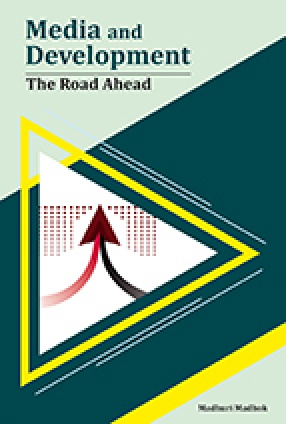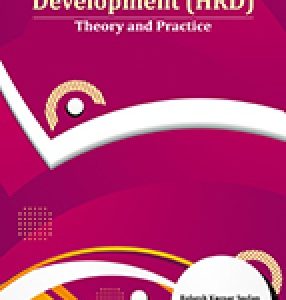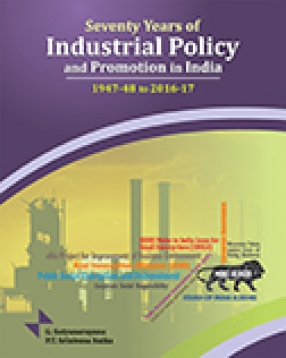
New Century Publications

411 books




Environment has become an important issue in recent years. Environment is characterised by interconnectedness that transcends national/international boundaries and hence international co-operation and national efforts are seminally important to achieve the objectives of (a) equitable access to clean air and water, (b) adaptation and mitigation of climate change, (c) conservation of biodiversity, (d) sustainable forest management and (e) safety in the management ...

The share of rural population in total population of India was 74.3 percent in 1991 which decreased to 72.2 percent in 2001. According to 2011 Census, rural population was 68.8 percent of total population. With prospect of industrialisation and the consequent migration of rural population to urban areas, the percentage share of rural population in total population is expected to decline to 60 percent by 2030. Nevertheless, in the present scenario the bulk of ...

Human beings are the heartbeat of an organization. They are the brain trust and think tanks of future strategies. Intangible assets, like human capital, decide the use of tangible and material resources innovatively to fulfil the objectives of any business entity.
Human resources management (HRM) relates to formulation of strategies by business entities concerning selection, training and rewarding of their personnel. Human resources development (HRD) is concerned ...


Bilateral and regional arrangements have gradually become permanent features of the global foreign policy architecture. India is keen to play a more pronounced role in and with regional and international organizations. Revamping of the foreign policy making establishments is a must to manage regional and international relationships.
India confronts grave security threats emanating from its territorial and maritime borders that range from nuclear attacks to terror ...

Apart from significantly improving the stability of the financial system, banking sector reforms in India since 1991 have supported the transition of the Indian economy to a higher growth path. In comparison to the pre-reforms period, the Indian banking system today is more stable and efficient. However, these gains need to be consolidated into a mature financial system to meet the challenges of financial globalization.
Many new processes, products and services ...

Capital market is a market for long-term funds. Capital market channelises household savings to the corporate sector and allocates funds to firms. In this process, it allows both firms and households to share risks associated with business. Moreover, capital market enables the valuation of firms on an almost continuous basis and plays an important role in the governance of the corporate sector.
An efficient capital market is an important constituent of a sound ...

India is a federal parliamentary democratic republic. The Constitution defines the organization, powers and limitations of the Central and State Governments. India has a multi-party system, consisting of various types of national as well as regional political parties. Political parties represent different sections and regions and play a major role in the politics of India. Through the electoral process, the people of India choose their representatives to run the ...

Development aims at bringing about qualitative changes leading to an upward movement of the entire social system. It is measured in terms of improvement in the lives of the people and strengthening of the individual’s and thereby a nation’s capacity to deal with the rest of the world. Development is, therefore, interlinked with the entire social, political and cultural fabric of a society.
This comprehensive approach to human development takes care of ...

The growth and prosperity of an economy is highly dependent on the entrepreneurial activities of its people. Entrepreneurs provide employment not only for themselves but also for others. Entrepreneurship is the quality of being an entrepreneur, i.e. one who undertakes an enterprise. The term puts emphasis on the risk and effort taken by individuals who both own and manage a business, and on the innovations resulting from their pursuit of economic success.
India ...

Infrastructure is generally defined as the physical framework of facilities through which goods and services are provided to the public. Its linkages to the economy are multiple and complex, because it affects production and consumption directly, creates positive and negative spillover effects (externalities), and involves large flows of expenditure. Generically, it has the following distinct components: (a) energy (electricity, coal, petroleum and natural gas, ...

The industrial environment in India during 1947-80 was characterised by strong centralised planning, Government ownership of basic and key industries, excessive regulation and control of private enterprise, trade protectionism-through tariff and non-tariff barriers-and a cautious and selective approach towards foreign capital. It was a quota, permit and license regime guided and controlled by a bureaucracy trained in colonial style. Domestic competition was ...

A modern economy, characterised by acute specialisation and exchange, is unthinkable without financial intermediaries, financial markets and financial instruments. Developing appropriate financial institutions and financial markets is a pre-requisite for speedy economic growth.
Soon after Independence in 1947, Government of India followed a policy of social control of important financial institutions. The nationalisation of the Reserve Bank of India (RBI) in 1948 ...






Micro, small and medium enterprises (MSMEs) are the backbone of India’s industrial economy. MSMEs not only play a crucial role in providing large employment opportunities, at comparatively lower capital cost than large industries, but also help in industrialization of rural and backward areas, thereby reducing regional imbalances, and assuring more equitable distribution of national income and wealth. MSMEs are complementary to large industries as ancillary ...

This study examines the relationship between the Islamic State of Iran and women during 1979-1989. It was during this period that various principles and organs of Islamic State in Iran were institutionalized under the supervision of late Imam Khomeini, the founder of Islamic Republic of Iran. It explores how the gender issue had been framed, approached and discussed in the context of state-building in the post-revolutionary Iran. It examines the impact of state ...

According to 2011 census, rural population was 68.8 percent of the total population of India. The rural population is scattered across 6 lakh villages. Ministry of Rural Development (MoRD), Government of India, is the nodal agency for rural development in India. It co-ordinates, implements and funds schemes which aim at ensuring that the fruits of economic development reach the villages and the common man. Marketing is the most important function for the success ...

Financial institutions are at the heart of an economic system. A modern economy, characterised by acute specialisation and exchange, is unthinkable without financial intermediaries. India has a long and chequered history of financial intermediation, particularly commercial banking. Soon after Independence in 1947, Government of India followed a policy of social control of important financial institutions. The nationalisation of the Reserve Bank of India (RBI) in ...

The share of urban population in India's total population was 25.7 percent in 1991 which increased to 27.8 percent in 2001. About 377 million Indians comprising of about 31 percent of the country's population, live in urban areas according to Census 2011. Projections are that by 2031, 40 percent of India's population will be residing in urban areas. In recent years, the urban sector in India has undergone a major change following the country's transition towards ...

